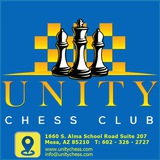📘 6...g5
The surprising preparation of Mamedyarov is shown with employing this very rare continuation. For the first time, Lajos Portisch successfully used this move against Victor Korchnoi in 1963.In fact, the original idea was introduced by Igor Bondarevsky who played this move instead of Bd7 in 1963.
The surprising preparation of Mamedyarov is shown with employing this very rare continuation. For the first time, Lajos Portisch successfully used this move against Victor Korchnoi in 1963.In fact, the original idea was introduced by Igor Bondarevsky who played this move instead of Bd7 in 1963.
📘 14...Qe8!
A dual-purpose move!
1-Black is ready to meet White's Qd3(With the idea of Qc4) with ...Qf7.
2- after h4-h5 black can transfer the queen to h5 and attack against the white King.
5.Qd3 Qf7 16.Qd2 Qg6 17.Bf4 h5
A dual-purpose move!
1-Black is ready to meet White's Qd3(With the idea of Qc4) with ...Qf7.
2- after h4-h5 black can transfer the queen to h5 and attack against the white King.
5.Qd3 Qf7 16.Qd2 Qg6 17.Bf4 h5
📘 8.Qb3
8.Qb3
Botvinnik's favorite move. In regards to the black bishop still being on f8, white indirectly pressures black's f7-pawn .For example after 8...N×c3 9.Bc4! e6 (9...Nd5!? 10.B×d5 e6 11.B×c6+ b×c6 12.0-0) 10.bxc3 Bg7 11.Ba3 with some initiative for white, M.Botvinnik-T.Petrosian, Wch (4),1963.
8.Qb3
Botvinnik's favorite move. In regards to the black bishop still being on f8, white indirectly pressures black's f7-pawn .For example after 8...N×c3 9.Bc4! e6 (9...Nd5!? 10.B×d5 e6 11.B×c6+ b×c6 12.0-0) 10.bxc3 Bg7 11.Ba3 with some initiative for white, M.Botvinnik-T.Petrosian, Wch (4),1963.
20...Ne7!
A modern approach to dealing with an isolated pawn. In the past masters were blocking the isolated pawn, nowadays they attack it!
21.Bb2 Nf5 22.Rad1 Rfd8 23.Qe2 Qe7 24.Ne4 Qh4=
A modern approach to dealing with an isolated pawn. In the past masters were blocking the isolated pawn, nowadays they attack it!
21.Bb2 Nf5 22.Rad1 Rfd8 23.Qe2 Qe7 24.Ne4 Qh4=
📘 32...g5!
The only strong continuation on the board that maintains black's advantage. Black provides the f4 square for his rook which there it can defend f7 and b4 pawns. It also fixes white's weak g4-pawn.
33.h×g5 h×g5 34.Rdd7 Rf4+ 35.Kg3 Re3+ 36.Kg2 b5 -/+
The only strong continuation on the board that maintains black's advantage. Black provides the f4 square for his rook which there it can defend f7 and b4 pawns. It also fixes white's weak g4-pawn.
33.h×g5 h×g5 34.Rdd7 Rf4+ 35.Kg3 Re3+ 36.Kg2 b5 -/+
📘 A: 33...Rh8?
With the idea of Kg6 and checkmating the white king.
The move order between Kg6 and Rh8 is important. Boris Gulko in his book 'lessons with a grandmaster' says: "if you plan to play two moves and don't know in which order to play them, start with the move you will play no matter what."
He needed to have played Kg6 first.
34.Nc8! N×c8 (R×c8 Qd7) 35.Qd7 Qh5 (Kg6?? 36.Qf5+ Kh6 37.Be3#) 36.Rb7 Qg5 37.Rb8 Qc1+ 38.Kg2 Rf8 39.Rb7 Qg5 40.Be3 Qg6 =
B: 33...Kg6! 34.Nd7 The only move 34....R×b5 (Rh8? 35.Qb6+ Kg5 36.Be3+ +-) 35.R×b5 Kh7-+
With the idea of Kg6 and checkmating the white king.
The move order between Kg6 and Rh8 is important. Boris Gulko in his book 'lessons with a grandmaster' says: "if you plan to play two moves and don't know in which order to play them, start with the move you will play no matter what."
He needed to have played Kg6 first.
34.Nc8! N×c8 (R×c8 Qd7) 35.Qd7 Qh5 (Kg6?? 36.Qf5+ Kh6 37.Be3#) 36.Rb7 Qg5 37.Rb8 Qc1+ 38.Kg2 Rf8 39.Rb7 Qg5 40.Be3 Qg6 =
B: 33...Kg6! 34.Nd7 The only move 34....R×b5 (Rh8? 35.Qb6+ Kg5 36.Be3+ +-) 35.R×b5 Kh7-+
📘 16...Rg8?
Black should have played 16...Be6 and take control of the d5-square. After the game move, white gains initiative.
17.Nd5+ Kf7 18.Nb6 Rb8 19.Rc1 Nc6 20.d5 Ne5 21.Rc7+ Kf6 22.Ke2 +/-
Black should have played 16...Be6 and take control of the d5-square. After the game move, white gains initiative.
17.Nd5+ Kf7 18.Nb6 Rb8 19.Rc1 Nc6 20.d5 Ne5 21.Rc7+ Kf6 22.Ke2 +/-
📘 7...h6 8.Bg2 g5!?
An interesting continuation that Kasparov successfully has employed against Dominguez in Saint Louis blitz tournament,2017. the idea behind is to prevent white's pawn raid on the king side.
9.Be3 Nbd7 10.Qe2 Ne5 11.Nf3 Nfd7
An interesting continuation that Kasparov successfully has employed against Dominguez in Saint Louis blitz tournament,2017. the idea behind is to prevent white's pawn raid on the king side.
9.Be3 Nbd7 10.Qe2 Ne5 11.Nf3 Nfd7
📘 27.Rh2?
White's carelessness and fully exploiting by black.
27...R×c3! 28.b×c3 R×c3+ 29.Rd3
🔹( Bd3 Nc4+ 30.Ke2 B×d4)
🔹(Kf2 B×d4+ 30.R×d4 R×c2+ 31.Kg3 R×h2 32.K×h2 N×f3+ —->N×d4)
29...B×d4+ 30.K×d4 R×d3 0-1
White's carelessness and fully exploiting by black.
27...R×c3! 28.b×c3 R×c3+ 29.Rd3
🔹( Bd3 Nc4+ 30.Ke2 B×d4)
🔹(Kf2 B×d4+ 30.R×d4 R×c2+ 31.Kg3 R×h2 32.K×h2 N×f3+ —->N×d4)
29...B×d4+ 30.K×d4 R×d3 0-1
📘 37.a4!
White is a pawn up and his bishop is better than opponent one. So he strengthens his queenside position and then looks for a plan against the black king. as you know in the opposite- bishop middlegames, The one who gets an attack is like having a piece up.
White is a pawn up and his bishop is better than opponent one. So he strengthens his queenside position and then looks for a plan against the black king. as you know in the opposite- bishop middlegames, The one who gets an attack is like having a piece up.
